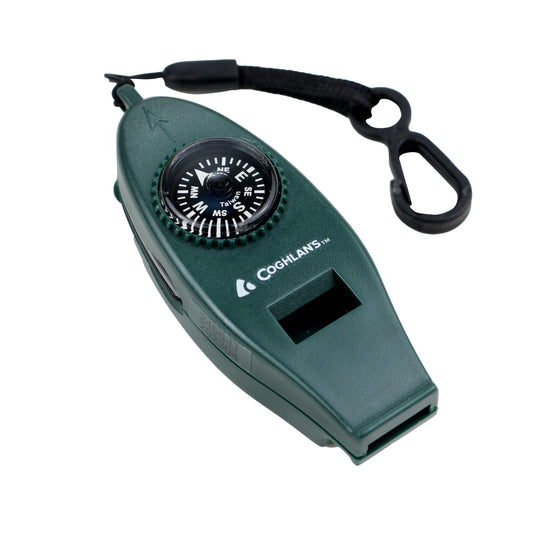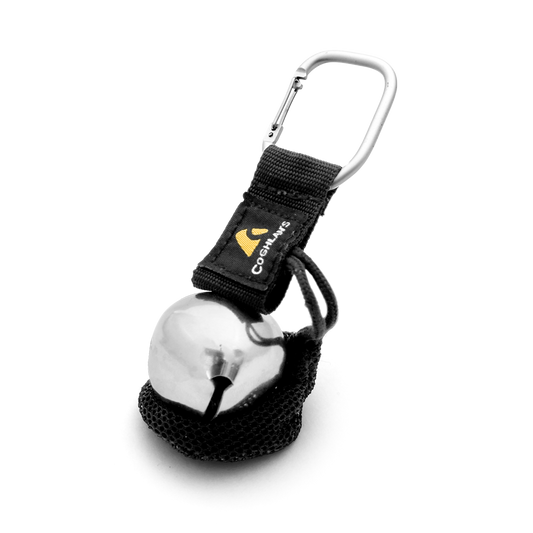

Day hikes — what's not to love? They're a great way to get out and enjoy nature, escape from the hustle and bustle of your daily routine, and provide some of the best scenery-to-effort-ratio when exploring new places. However, like any worthwhile activity, there's a degree of preparation required to ensure everything goes as smooth as possible.
If you're reading this, we'll assume you've taken an interest in hiking and are looking for guidance on what you should bring to maximize your enjoyment and, of course, safety. It may seem intimidating to know what you actually need when heading out on a multi-hour day hike, but fear not; we'll help set the record straight below so you can feel prepared and get back to focusing on the trail ahead.

Safety Gear for Hikes
It's always important to be prepared outdoors, even if you're only going for a short day hike. Weather can change quickly, injuries can occur, and despite our best intentions, we have to accept that things can happen that are out of our control. What we can control, however, is how prepared we are in the event something does go wrong. When it comes to safety gear, there are a few things that you should always have with you, no matter how short or safe the hike may seem.
Navigation / Compass
Knowing your bearings is helpful, even if you're headed off on a well-marked trail. Sometimes wildlife forces us to take a detour, or we accidentally take a wrong turn. It's always important to have access to a map of the trail, and a compass (that you know how to use), in order to be capable to navigate back to the trailhead.
Signaling Device
No one wants to imagine needing to signal for help, but if something were to happen, you'd be glad you have a way to alert other hikers you need help. For beginner day hikes, we recommend a tool like our Six Function Whistle – it features a signal whistle, compass, mirror for signaling, and other useful survival tools in one.
Remember: If you ever find yourself needing to signal for help, remember that the universally recognized distress signal is three loud whistle blasts that each last 3 seconds.

Bear Bell
If you're hiking in bear country, one of the best ways to avoid an unwanted meet and greet on the trail is to let your presence be known. Bears don't want to see you equally as much as you don't want to encounter them. The chime of a bear bell can help bears hear you and give them time to head in a different direction to avoid a confrontation. If you're hiking in a dense area, near a loud stream or waterway, or notice signs of a bear, it's recommended to make extra noise like talking or singing loudly.
Note: Before hiking in bear country, you should always be well-equipped and know what to do if you encounter a bear. Research the jurisdiction you plan to hike and consider packing bear spray if it is permitted.
Emergency Blanket / Shelter
Heat-reflecting blankets, bags, or tarps such as Coghlan's Emergency Blanket are so lightweight that they are hardly noticeable in your pack yet can make a huge difference in an emergency. If you or someone you are hiking with gets ill, injured, or stranded on a trail due to weather, you'll need to hunker down until help arrives. A heat-reflecting blanket allows your body to retain heat, which, in extreme situations, can prevent hypothermia.

Rain Protection
The best way to stay warm is to stay dry. If you find yourself day hiking frequently, there's a good chance that eventually, you'll face some unexpected rain. Despite what you may think, hiking in the rain isn'ta bad experience if you are prepared for it. We recommend always packing along at least an emergency poncho in case you have to quickly dodge some rainfall. These ponchos are lightweight and compact, making them hardly noticeable in your pack. If you're debating whether or not you should use a poncho or a rain jacket, check out our comparison between ponchos and rain jackets.
First Aid
Safety comes first, so this list would not be complete without including mention of first aid kits. The great outdoors is full of surprises. Scrapes, cuts, and stings can happen. Having a first aid kit puts your mind at ease that you can deal with these issues on the trail and get back to having a good time. When choosing a first aid kit, consider how many people you are hiking with and how intense the hike is. Knowing what your risk exposure is will dictate if you need a robust first aid kit vs. one with just the basics.
Now that you've got the essentials down, it's time to grab your pack, gather a group of friends, and head to the trailhead. We hope you have a fantastic hike and get hooked on the joy that it brings. Be sure to tag us in your hiking photos on Instagram and Facebook!



